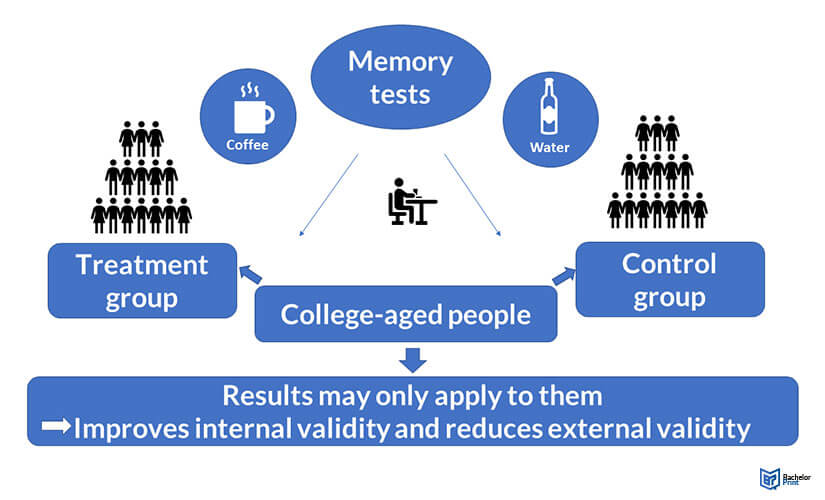
Internal and external validity are two fundamental measures in the methodology used in research to assess the quality and applicability of the results. Internal validity relates to the robustness of the research design and the extent to which it can provide evidence of a cause-and-effect relationship between variables. External validity concerns the generalizability of the findings to other contexts. Balancing them is a critical aspect of interpreting empirical research.
Definition: Internal vs. external validity
When examining cause-and-effect interactions, validity can be divided into internal vs. external validity.
Internal validity is the degree of assurance that the causal link being examined is reliable and unaffected by other variables and factors.
External validity is the extent to which the findings of a study may be extended to other contexts, groups, or events.
Experimental design affects study validity. Verify the measurement validity of your instruments or tests.
Internal vs. external validity: A cooperation
External validity is frequently sacrificed for greater internal validity, and vice versa. The sort of study you select reflects the research’s priorities.
Discussed below is a trade-off between internal vs. external validity:
Discussed below are the threats to internal vs. external validity:
Threats to internal validity
Eight factors can compromise your research’s internal validity. Several are explained using the following illustration:
| Threat | Meaning | Example |
| History | Unanticipated occurrences alter the study's conditions and affect its outcome. |
During the study, a new manager is hired, which boosts employee satisfaction. |
| Maturation | The dependent variable is influenced by time. |
Throughout the six-month experiment, people gained experience and became better at their professions. Consequently, job satisfaction could increase. |
|
Testing |
The pre-test influences the post-test findings. |
Employees feel compelled to maintain consistency between their pre- and post-test responses. |
|
Regression towards mean |
On a second measurement, extreme results approach the mean. |
Employees who scored extremely low in the initial job satisfaction survey are likely to have a higher increase in job satisfaction than those who scored average. |
| Instrumentation | During the study, the dependent variable is measured differently. |
The post-test questionnaire comprises additional questions compared to the pre-test questionnaire. |
|
Social interaction |
Interactions between individuals from distinct groups affect the outcome. |
The group with fixed working hours resents the one with flexible working hours, and as a result, their job happiness declines. |
Threats to external validity
To design a robust study, it is essential to identify and mitigate threats to external validity.
| Threat | Meaning | Example |
| Sampling bias | The sample does not adequately represent the population. | The sample comprises depressed individuals. They possess traits that distinguish them from other clinical populations, such as those with personality disorders or schizophrenia |
| History | An unconnected occurrence alters the results. | A natural disaster strikes a neighboring state just before the pre-test. Consequently, pre-test anxiety scores are more significant than they would be otherwise. |
| Experimenter effect | Unintentionally, the qualities or actions of the experimenter influence the results. | The mindfulness training instructor unintentionally emphasized the significance of this study for the research department's financing. As a result, participants exert additional effort to minimize their anxiety throughout the study. |
| Hawthorne effect | Participants' propensity to alter their behavior when they know they are being monitored. | Participants actively avoid anxiety-provoking circumstances throughout the study since they know they are participating in research. |
| Testing effect | Pre- or post-test administration influences the outcomes. | Participants have less anxiety during the post-test because they are more familiar with the format and questions from the pre-test. |
| Situation effect | The generalizability of the findings is hindered by variables such as the setting, time of day, geography, or researchers' characteristics. | The study is replicated with one modification: the individuals now practice mindfulness in the evening. This time, no progress is evident in the results. |
Internal vs. external validity: Examples
Below are internal vs. external validity examples:

FAQs
Internal vs. external validity measures how accurately the independent variable affects the dependent variable. External validity generalizes research.
Internal vs. external validity focuses on extraneous variable control, while external validity emphasizes practical applicability.
Using a cognitive map, researchers may methodically address internal vs. external validity to reflect treatment effects and generalize findings appropriately.
